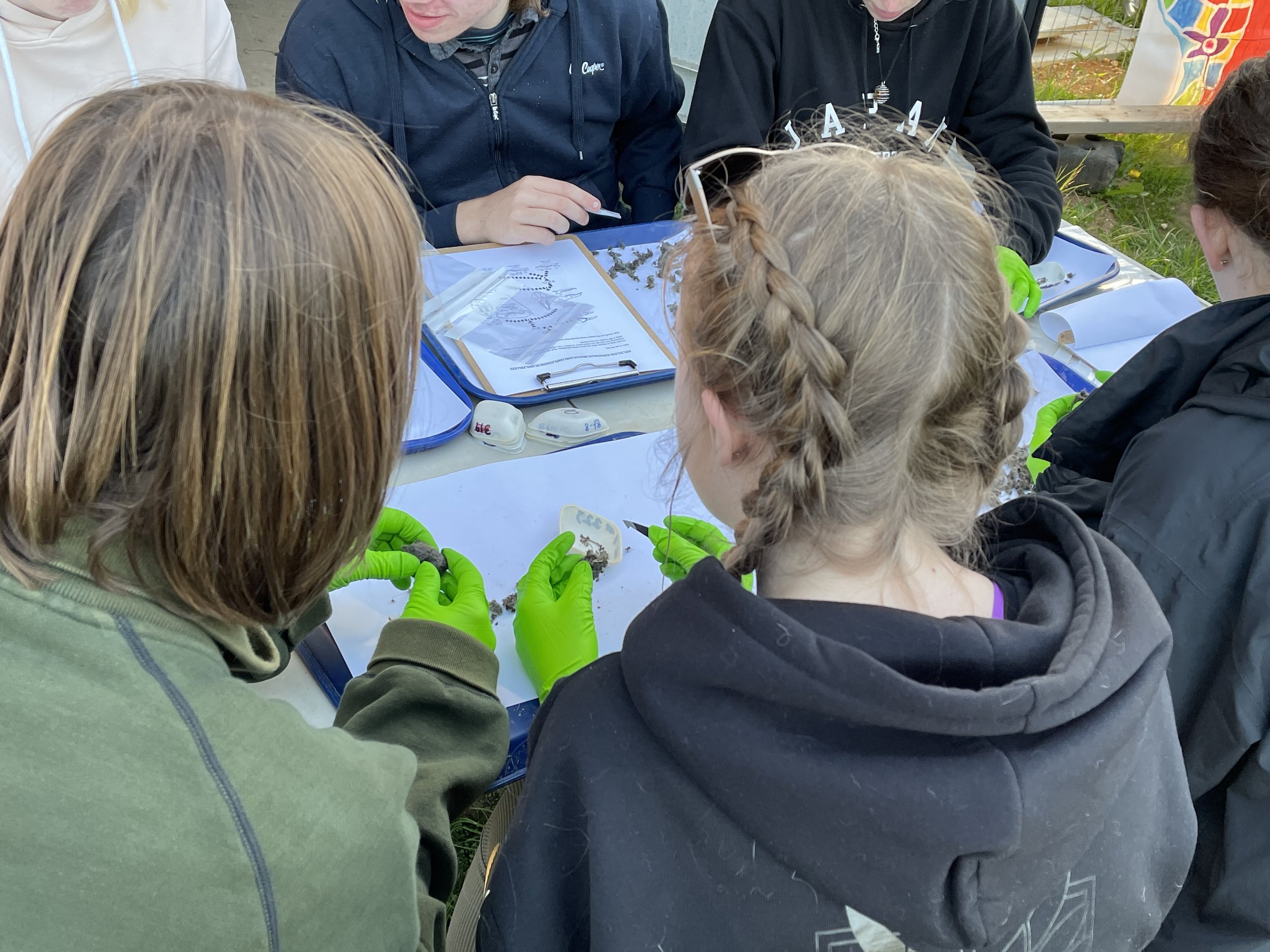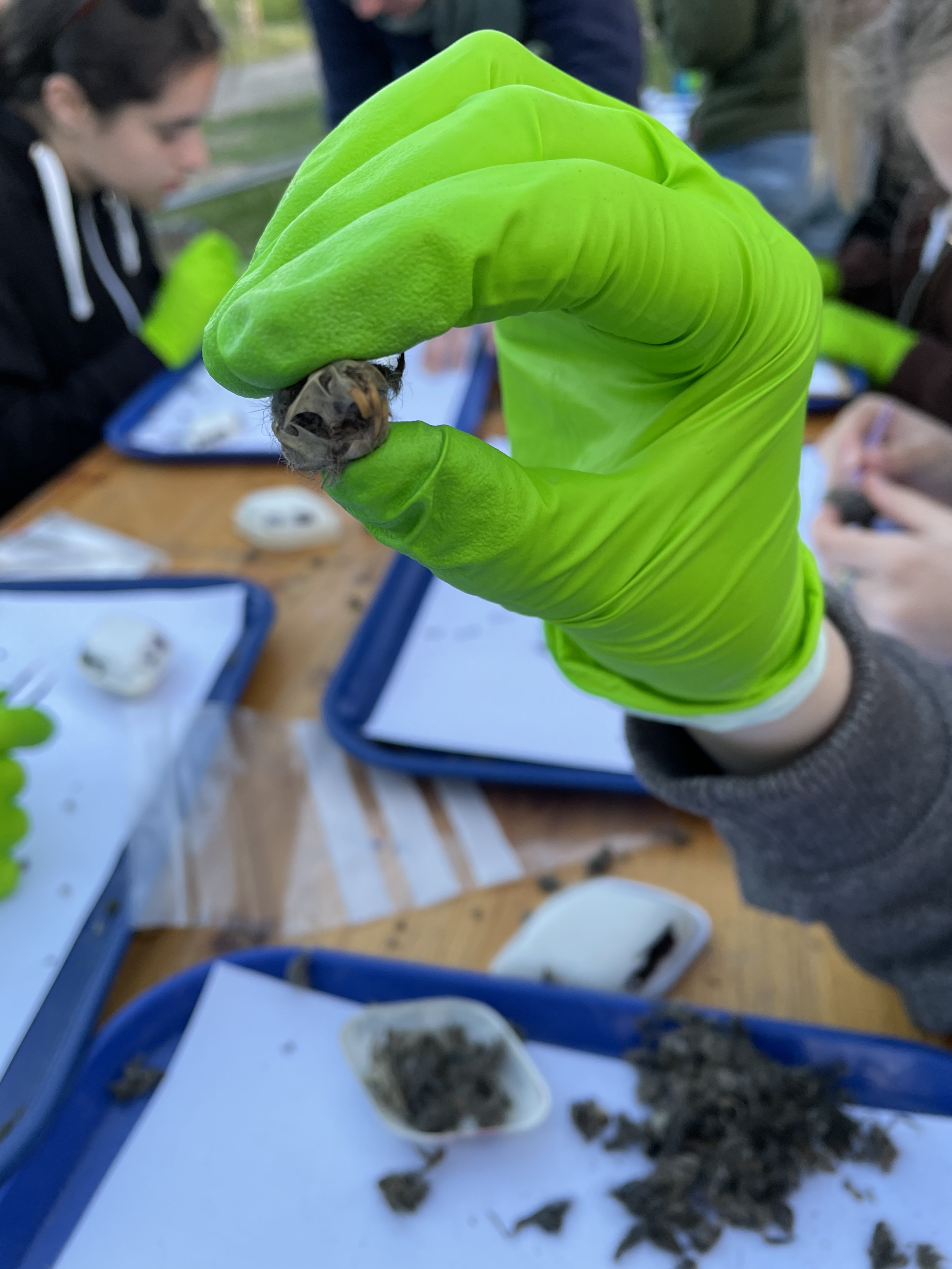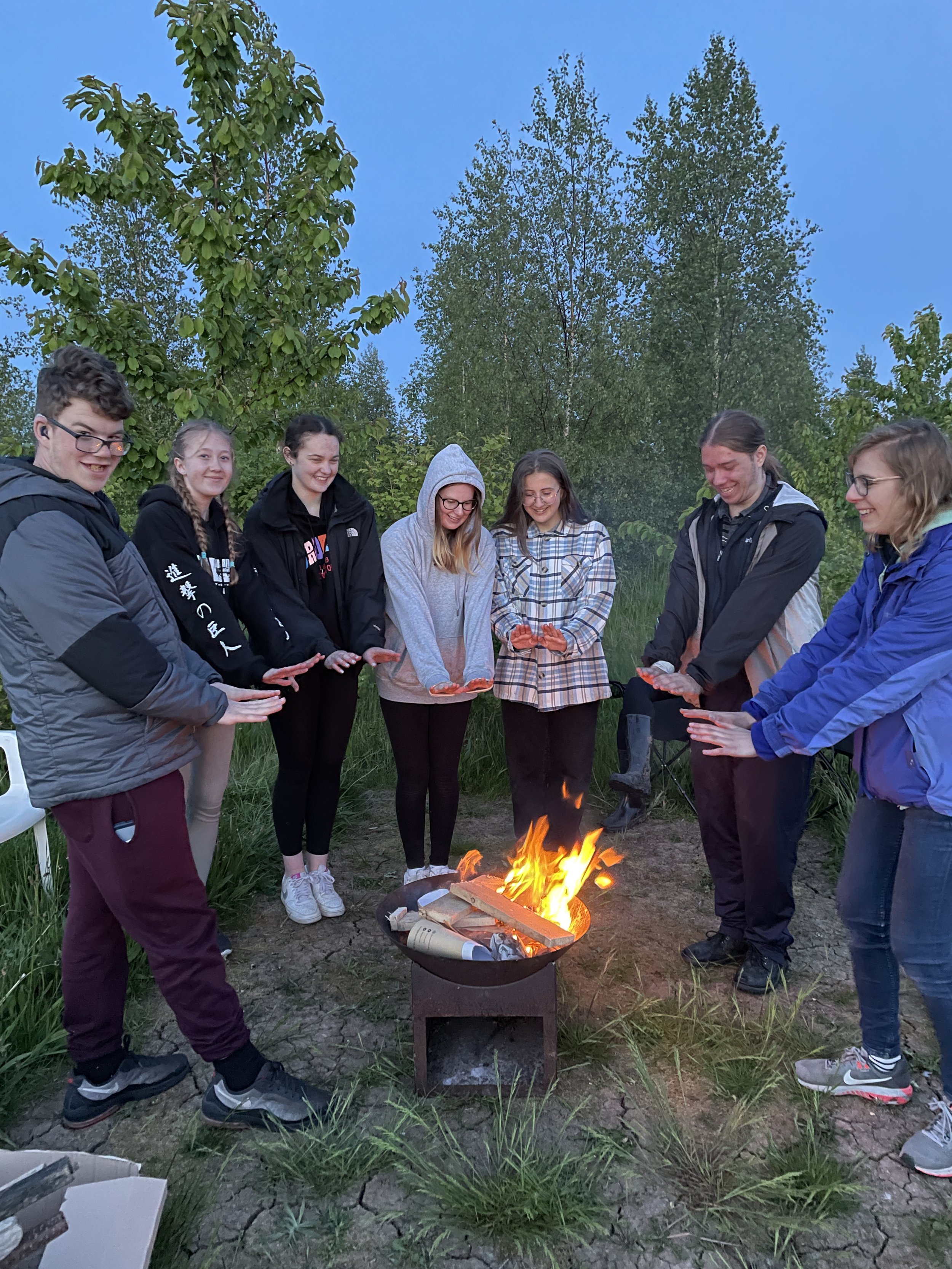Youth Team Discover Harmony Woods By Night
On the evening of Friday 13th May 2022, the Andover Trees United Youth Team, a Jane Goodall Institute’s Roots&Shoots affiliated group and participants of the Nature in Harmony Exchange Project set out to discover Harmony Woods by night! This experience will form part of their John Muir Discovery awards.
The evening began with pitching up their tents, thankfully the rain and the wind held off and the evening was bright and mild. The 10 young people were joined by the Nature in Harmony Exchange Project leaders, Alex Marshall, Sarah Kennie and Megan Broughton, plus 3 additional helpers: Henry King (Sparsholt student and volunteer), Siff Little (volunteer) and Dr Monika Knul (Lecturer of archeology and geography at the University of Winchester).
After the camp was set up, it was dinner time. Each camper brought along a contribution to add to the buffet - we certainly were’t short of snacks!
Then, it was time for owl pellet dissections with Dr Monika Knul! Monicka kindly gave her time to share her skills and knowledge with the youth team. She brought with her a microscope, a bag of Barn Owl pellets, tweezers and identification guides, one for each of the youth team. She taught them how she analyses owl pellets in her lab, and they each were able to analyse an owl pellet for themselves.
Owl pellets are the indigestible parts of the owl’s food, such as fur, teeth and bones. They are formed in the birds gizzard (an organ that forms part of the bird digestive system), and then regurgitated. Many kind of birds produce pellets, including birds of prey, crows and sparrows.
Barn owls in the UK tend to eat voles, shrews and mice - they swallow them whole! Sometimes lizards, frogs, moles and even small bird remains can be found in owl pellets, too.
By using tweezers and a gentle hand, the young team were able to pull apart the pellets to reveal small mammal bones and teeth. Then, with their ID guides and the microscope, they could study the shape of the bones and teeth and identify which species of small mammal they had belonged to. It was a truly fascinating workshop!
After this, the sun was setting and it was time to set up the moth trap and head off on a bat walk. Thanks to Test Valley Borough Council for lending us the bat detectors for the evening!
We detected lots of bats, especially along the ancient hedgerow area near Enham Alamein. Although it is not easy to narrow identifications down to species level using a simple bat detectors, we are quite confident that we saw Common Pipistrelles and Common Noctule bats.
Finally, it was time to wind down by the campfire and go to bed.
The next morning we opened up our moth trap. There were fewer moths than expected but this may have been due to it being an incredibly clear night sky - the lack of cloud cover meant that the temperature was very chilly and the light pollution was less ‘buffered’, both of these factors can decrease the number of moths caught in the trap. Furthermore, the moon was almost a full-moon, so this created a very bright secondary light source. Nevertheless, we did identify two new species for the Nature in Harmony database: the Shuttle-shaped dart moth (a female) and the Muslin Moth (a male).
We then packed up all our kit, washed all our pots, and got ready for the monthly Saturday volunteer work day session.
All in all, the camp out was a great success and thoroughly enjoyed by all.
We would like to sincerely thank Henry, Siff and Monika for giving their time to help out. Plus Alex, Sarah and Megan for their hard work in putting the Exchange Project session together.
Events like this are only made possible by the kindness of our volunteers. If this sounds like the sort of thing you would like to help make happen in the future, please don’t hesitate get in touch!
We are actively searching for new volunteers (preferably aged 18-35) to support the ATU Youth Team.
All the best,
The trees team.








